SHINELONG-A leading supplier of turn-key solutions in the hospitality and catering since 2008.
Restaurant Kitchen Equipment Manufacturers: Things You May Want to Know
restaurant kitchen equipment manufacturers provided by Guangzhou Shinelong Kitchen Equipment Co., Ltd. is the top product in the industry. Since its development, its application in the field is becoming more and more extensive. Our design team keeps a close eye to its development so that the ever-changing market needs can be met. We adopt the latest technology to ensure that it is at the forefront of the market.
Our Shinelong brand core relies on one principal pillar - Breaking New Ground. We're engaged, nimble and brave. We depart the beaten path to explore new paths. We see the accelerated transformation of the industry as a chance for new products, new markets and new thinking. Good isn't good enough if better is possible. That's why we welcome lateral leaders and reward inventiveness.
We actively listen to customers through SHIENLONG and diverse channels and applying their opinions to product development, product quality & service improvement. All is for fulfilling the promise on restaurant kitchen equipment manufacturers for customers.
Why Hotels Need Smart Kitchen Equipment in 2025?
In recent years, technological advancements have sparked a significant revolution in hotel kitchens. The traditional hospitality industry is grappling with a 27% increase in energy costs and 15% food waste rates, largely due to outdated equipment. In contrast, smart kitchen systems have emerged as a solution to these pressing challenges.
By integrating modern technologies such as AI algorithms, smart kitchen equipment achieves more precise control. For instance, it reduces temperature fluctuations from ±5°C in traditional setups to ±0.8°C, ensuring consistent food quality. Regarding energy costs associated with old kitchen appliances, heat-recovery technology cuts gas consumption by 18%, while IoT sensors optimize refrigeration cycles for 30% energy savings - a substantial benefit for large hotel kitchen operations.
The difficult task of expanding traditional kitchen workspaces can now be easily addressed through modular designs. These designs increase workspace utilization by 33%, which is crucial for urban hotels with limited space.
With the global smart kitchen market projected to grow at 8-10% CAGR through 2025, upgrading to smart kitchen systems is no longer optional but a strategic imperative for the hospitality industry.
What Is Smart Kitchen Equipment?
Smart kitchen equipment is modern devices that streamline cooking and cleaning through advanced technologies like IoT sensors, AI algorithms, and automation. Smart appliances represent a significant evolution in kitchen functionality, offering several distinctive advantages:
Self-Monitoring Capabilities
Smart appliances incorporate real-time diagnostics to detect malfunctions, such as refrigerant leaks, and alert users immediately. This proactive monitoring ensures potential issues are addressed before they lead to costly repairs or food spoilage.
Food Safety Enhancement
Temperature monitoring systems continuously track conditions to ensure food safety standards. Staff receive immediate alerts if temperatures deviate from safe zones, helping prevent food-borne illnesses and maintaining compliance with health regulations.
Adaptive Learning
Machine learning algorithms analyze historical usage patterns to optimize cooking cycles. This adaptive feature ensures consistent results while potentially reducing energy consumption and operational costs.
Remote Accessibility
Smart kitchen equipment enables remote monitoring and control through smartphones, tablets, or computers. Users can adjust settings, receive status updates, and troubleshoot issues from anywhere, enhancing operational flexibility and efficiency.
The 2025 Essential Smart Hotel Kitchen Equipment List
After understanding the transformative potential of smart kitchen technology, it's clear that these innovations are no longer optional for hotels aiming to stay competitive. Below, we explore eight cutting-edge smart kitchen systems poised to redefine efficiency, sustainability, and precision in 2025—each backed by technical advancements and data to empower your hospitality operations.
1. AI-Optimized Combi Ovens
AI-driven combi ovens, such as Shinelong's Combi Oven Series, are revolutionizing hotel kitchens by merging steam, convection, and AI-powered load-sensing technology. Unlike traditional ovens that rely on manual adjustments, these systems dynamically calibrate cooking parameters (temperature, humidity, and airflow) based on real-time food volume and type. For example, Shinelong's model reduces cooking time by 20% while maintaining ±0.9°C temperature stability, ensuring perfectly seared steaks or delicate pastries every time.
Technical Edge:
Intelligent program: Machine learning analyzes historical cooking patterns and records over 1000 recipes to auto-adopt banquet mode.
Dual-Zone Control: Simultaneously bake and roast without cross-flavor contamination.
Applications: Ideal for high-volume banquet kitchens or resorts with diverse menus.
Adoption Tip: Coastal properties should opt for 316L stainless steel models to withstand salt corrosion.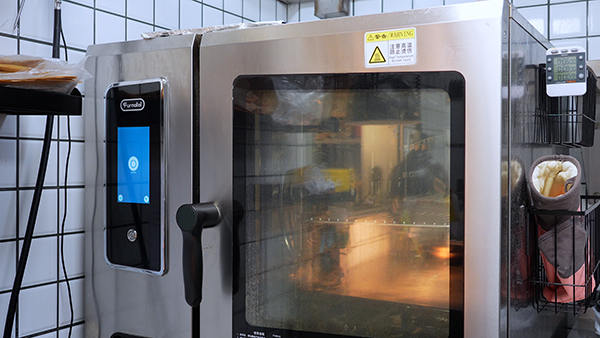
2. Smart Refrigeration Systems
Modern smart refrigeration units, like Shinelong's Furnotel Series, leverage Dixell thermostat and separate compressors to address longstanding challenges. Traditional units struggle with temperature fluctuations (±5°C), but Shinelong's triple-sealed PUF insulation locks cold air 40% longer, maintaining FDA-compliant 3°C even at 2,500m altitudes. For tropical resorts, hydrophobic coatings prevent condensation buildup, reducing maintenance costs by 30%.
Technical Edge:
Aerodynamic Ventilation: Reduces energy consumption by 22% through optimized airflow.
Self-Diagnostic IoT: Alerts staff about refrigerant leaks or filter replacements via mobile app.
Applications: Mountain lodges, beachfront resorts, or urban hotels requiring HACCP compliance.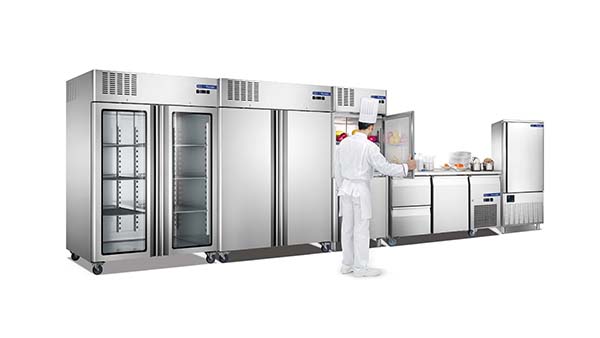
3. Robotic Food Prep Stations
Robotic prep stations combine axis arms with vision-guided slicing to automate tasks like vegetable dicing or meat portioning. Traditional manual methods incur 15% ingredient waste, but AI-driven systems reduce this to 3% while cutting labor costs by 35%. For instance, a luxury Dubai hotel reported 24% efficiency gains after deploying ChefBot for buffet operations.
Technical Edge:
Auto-Sanitization: UV-C lights sterilize surfaces between tasks, exceeding ISO 22000 standards.
ERP Integration: Syncs with inventory systems to track real-time stock levels.
Applications: High-turnover banquet kitchens or properties emphasizing consistency.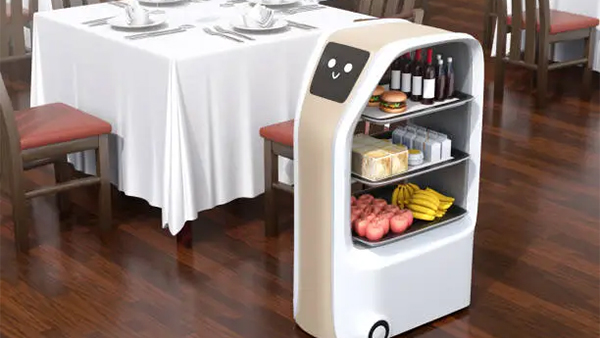
4. Smart Ventilation Hoods
Smart Ventilation Hoods uses AI to adjust fan speeds based on real-time cooking emissions, reducing noise to at least 55dB (quieter than a conversation) while cutting energy use by 35%. Traditional fixed-speed hoods waste energy during off-peak hours, but adaptive systems optimize airflow dynamically. For open kitchens, this ensures guest comfort without compromising air quality.
Technical Edge:
VOC Sensors: Detect smoke and grease particles, triggering instant filtration.
Heat Recovery: Redirects exhaust heat to preheat water, saving 18% gas costs.
Applications: Open-concept kitchens or properties in polluted urban areas.
5. Autonomous Dishwashing Units
Modern automatic dishwashing equipment, which typically uses UV-C and electrolyzed water, can sanitize dishes in 90 seconds (compared to a 15-minute cycle), saving 12,000 liters of water per year. Conventional equipment often suffers from lime scaling, but equipment equipped with self-cleaning nozzles and 304-grade steel pipes can withstand hard water damage, making it ideal for Mediterranean resorts.
Technical Edge:
Modular Design: Stack units for banquet-scale operations.
Leak Detection: IoT sensors alert staff to issues before downtime occurs.
Applications: Eco-certified hotels or cruise ship galleys.
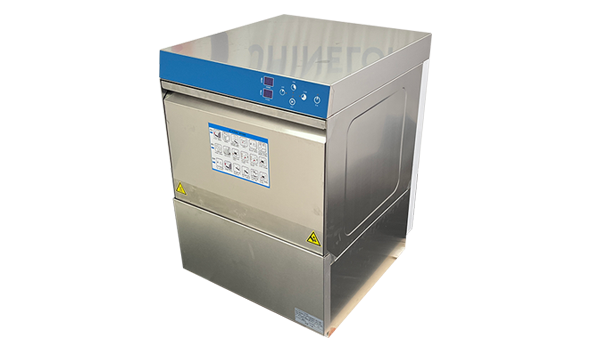
6. Precision Induction Ranges
With German EGO thermostats, Shinelong's 700/900 Series achieves ±1°C control, reducing oil splatter by 50% compared to gas ranges. Traditional wok stations risk flare-ups, but induction's zone synchronization enables safe, high-heat stir-frying. A Bangkok hotel using FireMaster reported 28% lower ventilation costs due to reduced smoke.
Technical Edge:
Load-Sensing Burners: Adjust power output based on pan size.
Quick-Clean Surfaces: Electropolished stainless steel resists stains.
Applications: Asian cuisine-focused hotels or properties with open kitchens
7. AI-Powered Inventory Management Systems
AI-driven inventory systems are redefining resource optimization in hotel kitchens through machine learning algorithms and IoT-enabled sensor networks. These platforms integrate real-time data from refrigeration units, POS systems, and supplier databases to:
Predict Demand: Analyze historical consumption patterns + seasonal trends (e.g., 23% higher seafood orders during summer in coastal hotels) with 92% forecast accuracy.
Prevent Waste: Multi-spectral imaging sensors detect early-stage produce spoilage, reducing perishable waste by 28% (vs. 15% industry average).
Automate Replenishment: Sync with ERP systems to auto-order staples when stock dips below safety thresholds, cutting emergency procurement costs by 35%.
Technical Architecture:
Computer Vision: 3D depth cameras measure ingredient volumes with ±2% margin of error.
Blockchain Traceability: RFID tags track batch expiry dates and supplier compliance (HACCP/ISO 22000).
Applications:
Resorts: Manage multi-outlet inventories (beach bars, fine dining) through centralized dashboards.
Boutique Hotels: Compact systems for kitchens under 50㎡ with cloud-based analytics.
Adoption Strategy:
High-Volume Properties: Implement predictive models trained on 12+ months of F&B data.
Remote Locations: Opt for edge computing devices with offline functionality.
8. Modular Cook-Chill Systems
Modern cook-chill technology enables HACCP-compliant batch production through rapid temperature drop protocols. Advanced systems achieve 90°C→3°C in ≤90 minutes via:
Multi-Stage Cooling:
Active Blast Chilling: Turbo fans force -18°C air at 12m/s velocity.
Phase-Change Plates: Paraffin-based thermal batteries maintain 0°C during power outages.
Hybrid Sanitization: Ozone + UV-C treatment eliminates 99.97% pathogens (per NSF/ANSI 3-A testing).
Operational Advantages:
Texture Preservation: Ice crystal formation limited to <50μm (vs. 150μm in conventional chilling), preventing meat fiber damage.
Energy Recovery: Integrated heat exchangers recycle 65% of thermal energy to preheat cooking water.
Applications:
Convention Hotels: Prepare 500+ banquet plates 24hrs in advance.
Healthcare Hospitality: Meet strict nutritional guidelines for patient meals.
Implementation Guidelines:
Humid Climates: Specify corrosion-resistant evaporator coils (316L SS).
High-Altitude: Select units with dual-stage compressors for consistent 0°C at 3,000m.
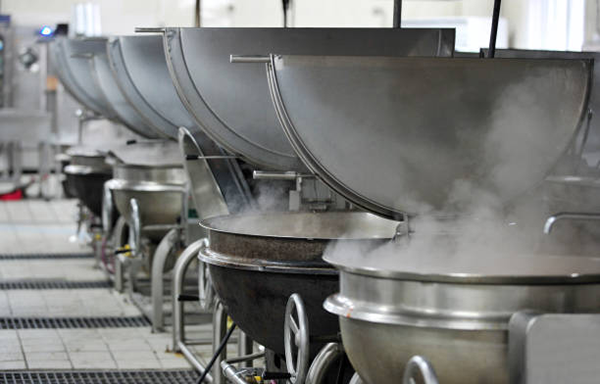
AI-driven kitchens, soon to be standard across 97% of hospitality venues, will leverage 5G-powered IoT for real-time equipment monitoring, predict maintenance needs, and ensure consistent food quality. Circular design principles will see heat-recovery systems recycling up to 85% of kitchen exhaust energy, reducing both environmental impact and operational costs. Perhaps most excitingly, hyper-personalization through AI algorithms will allow hotels to create customized menu options based on individual guest preferences and dietary requirements, enhancing satisfaction and loyalty.
For properties in challenging environments, such as coastal areas, investing in corrosion-resistant 316L stainless steel models will be essential for longevity and performance. The evolution of hotel kitchens into intelligent, connected spaces isn't just a trend—it's a strategic imperative that will define the next era of hospitality excellence.
- What is an example of a smart kitchen?A smart kitchen integrates advanced technology to streamline cooking and management tasks. For instance, McDonald's has implemented automated fryers and smart ovens in some U.S. locations. These devices reduce cooking times, lower labor costs, and ensure consistently high-quality food, thereby enhancing operational efficiency and customer satisfaction
- What is smart kitchen technology?What Is a Smart Kitchen? A smart kitchen utilizes Wi-Fi, Bluetooth, and AI technology to enhance everyday kitchen tasks. Its primary goal is to reduce manual labor, save energy, and improve the overall efficiency of the cooking
- What is smart technology in food processing?Smart technology in food processing refers to the use of robotics and automated systems that enhance precision, speed, and safety. These technologies take over repetitive and precise tasks, ensuring consistent quality, reducing human error, and protecting workers from hazardous conditions.
- What is the AI technology in the kitchen?AI technology in the kitchen uses intelligent algorithms to design efficient pantry layouts, maximizing storage and accessibility of food items.
- Are you the manufacturer?Yes, we are half manufacturer, half trading company. Manufacturing Furnotel brand equipment, trading for all kinds of kitchen equipment, especially turn-key solutions.
- What are integrated hotel equipment systems?Integrated hotel equipment systems refer to the interconnection of various technologies and equipment within a hotel, such as property management systems, HVAC, lighting, security, and access control, to operate as a unified system. This integration enhances operational efficiency, reduces energy waste, and improves guest experiences through features like automated energy management and centralized monitoring.
- What is the essential kitchen equipment list for a hotel?Essential kitchen equipment for hotels includes commercial ovens, refrigeration units, preparation tables, dishwashing machines, food processors, mixers, slicers, grills, fryers, steamers, and exhaust hoods. These items are crucial for food preparation, storage, and service in a hotel setting.
- How do smart kitchen apps work in hotel kitchens?Smart kitchen apps in hotel kitchens automate and monitor cooking processes, manage inventory, and enhance guest experiences. They integrate with appliances for precise cooking and real-time tracking, improving efficiency and reducing waste.
The kitchen is a place with a lot of oil smoke, and everyone should know that even stainless steel kitchen utensils and equipment are bound to rust. How should we deal with this situation? 1. Reinforcement support All work surfaces, work surfaces, drain plates, dishwashing stone surfaces, etc. need to be installed with reinforcement support. The thickness of the reinforcement support should be at least 2mm and the material should be made of stainless steel. 2. Screws for leveling the bottom of the feet All foot tubes should be installed with stainless steel spring-shaped bottom leveling screws. The bottom screws need to be tightly connected with the foot tubes. After the workbench is leveled, the screws should have a locking device. 3. Bottom plate a) When there is a bottom plate under the cabinet, the bottom plate should be 38mm high, 12mm folded, and become a groove shape. The four corners should be cut to match the foot tubes. A 28mm*100mm*25mm stainless steel groove reinforcement support is installed under the bottom plate. b) The movable bottom plate is made of the same material as the fixed layer plate, with 4 sides 38mm high, 12mm folded edges, and grooved. The 4 sides also need to be cut to match the leg tubes. Each section of the movable layer plate cannot exceed 800mm, and each section of the layer plate needs to be reinforced. 4. Unless otherwise specified, all support leg tubes should be made of stainless steel not less than 38mm. 5. Unless otherwise specified, all leg tube brackets should be made of 25mm diameter * 1mm thick stainless steel. The horizontal bracket is perpendicular to the main leg tube and remains horizontal. Unless otherwise specified, the leg tube bracket is safely welded and polished 180mm from the ground. 6. To prevent oxidation corrosion after welding, stainless steel must be treated with anti-rust. The surface of the weld surface needs to be polished to prevent corrosion. After the bottom is properly polished, apply a metallic anti-rust paint. When welding a galvanized frame, it should be welded before the frame is galvanized. If a galvanized frame needs to be welded, a metallic anti-rust paint should be applied after welding. Keywords: school canteen kitchenware, canteen stainless steel kitchen equipment, school kitchen renovation project, Guangzhou kitchenware factory.
China Market Research Online understands that energy-saving kitchenware in Guangzhou is, as the name implies, kitchenware that can save energy during use. In today's society, under the background of advocating energy conservation and emission reduction, the rise of energy-saving kitchenware in Guangzhou is a general trend. Energy-saving kitchenware in Guangzhou mainly refers to kitchenware for processing food, and stoves are the most important part. The stove uses gas, oil, etc. as fuel. The key factor for its thermal efficiency is the mixing ratio of gas and air. To make full use of the fuel, it must be completely burned. The traditional stove uses diffusion combustion technology, gas and air are mixed and burned, the mixing speed is slow, the flame temperature is low, the gas cannot be completely burned, and it is easy to produce a large amount of harmful gases, which can poison people, and part of the fuel is wasted. Market research shows that energy-saving kitchenware in Guangzhou has a wide range of uses, such as steel welding, steel plate cutting and heat treatment. In fact, wherever flames are used, from small household stoves to large incinerators, they can be used. In the past, acetylene or LPG (liquefied petroleum gas) was used, which had the disadvantages of easy explosion, high energy consumption, high price and incomplete combustion. But the only fuel inside the "oxyhydrogen machine" is pure water, and the rest is a general power source. Even if the flame is turned off, the pure hydrogen and oxygen emitted will naturally blend into the atmosphere, which is harmless to the human body and does not pollute the environment. And because it can be decomposed immediately, there is no need for storage, there will be no gas explosion, it is completely renewable and will not be scarce, and there is no need to consume the earth's limited resources. What is particularly economical is that 1CC of water can produce more than 1,700 times the gas, and the economic benefits are quite huge. New energy hydrogen and oxygen flame energy equipment - characteristics of rapid gas production, concentrated flame energy, complete combustion operation accuracy (concentrated flame energy, accurate control of welding points) shortened working time (high temperature, high efficiency, saving time) smoothness of cutting surface (smooth cutting section of steel). High safety is low-pressure gas, no storage flame is stable, once the machine is turned on, energy comes. Multiple safety devices, such as overheating and insufficient water, will automatically cut off the power to protect the safety of equipment and users. High environmental protection The generated gas can be completely burned without the generation of black smoke and harmful gases. High efficiency Compared with the cost of acetylene, LPG and other gases, it is both economical and affordable. The heat energy is concentrated and the temperature will not spread, which can maintain a good working environment and avoid fatigue of operators due to heat. High mobility The body size is moderate, and casters are added at the bottom for easy movement. It is suitable for various places. It can generate gas and burn flames without warming up, and can be used for a long time. Use "Hydrogen-oxygen flame energy equipment" has a wide range of uses, including most of the work that uses gas as fuel (such as gas and acetylene). Now Guangzhou kitchen equipment products are becoming more and more diversified, and many traditional kitchenware stores are no longer suitable for the needs of new-age consumers. Only by adapting to the current kitchenware market consumption environment can our kitchenware companies break through in the fierce competition. Commercial fast food equipment has been developed for more than ten years. From the traditional manufacturing model to the current high-tech industry, great changes have taken place in many aspects. In the future, the development of Guangzhou kitchen equipment industry may show several major trends, and the transformation and upgrading of the industry is also urgent. 1. Highlight the environmental performance of products At present, although environmental protection, energy saving, and personalized customization are deeply concerned by the industry, there are very few companies that actually do so, and most companies only use this to promote. The strictest environmental protection law has been implemented, and environmental protection and energy saving will be the general trend in the future. In addition, the 80s and 90s gradually occupy the dominant position in society, and the demand for personalization will increase. With the increase in demand for characteristic style hotels, personalized and customized products will also be a development trend. 2. Let specialization defeat homogeneity At present, the Guangzhou kitchen equipment industry is in a red ocean of competition, with many brands and serious homogeneity, which makes consumers at a loss. Affected by homogeneity, future enterprises will develop in the direction of small and beautiful, that is, first fine and then big. Perhaps the current hotel kitchen equipment market is still in a chaotic period, but many companies will gradually realize the importance of brand specialization and seek differentiation in strength on the road of "breaking through" homogeneity. For example, the Central Kitchen Construction and Development Forum recently sponsored by the China Cuisine Association is mainly about the specialization of enterprises, division of labor and cooperation, and warming up together. 3. Strengthening enterprise value-added services Due to the high competition in the Guangzhou kitchen equipment industry, the market demand for Guangzhou kitchen equipment service industry will be multiplied. In this case, marketing companies, logistics, fast food equipment engineering companies, etc. can inject more support into the Guangzhou kitchen equipment industry. Perhaps Guangzhou kitchen equipment giants can also include it in their own business scope and assimilate it into corporate value-added services. This may be a major trend in the future. The development and changes of the market economy have had a significant impact on our fast food equipment industry. In terms of marketing methods and channels, we have gone from initially meeting basic needs to fissioning in the direction of high-end environmental protection. In recent years, China has experienced rapid economic development, people's living standards have been rapidly improved, and the requirements for quality of life are getting higher and higher. People are no longer just seeking food and clothing and simply meeting needs. Now they have transformed into diversified and higher-level spiritual enjoyment. The economic system with the service industry as the main body is the basic form of today's society. The kitchenware industry has always been an indispensable product in our lives. Keywords: Guangzhou kitchen equipment, Guangzhou energy-saving kitchen equipment.
Author:SHINELONG-Commercial Kitchen Equipment Solutions Suppliers
Safety features and certifications in hospital kitchen equipment
Introduction:
In a hospital environment, every aspect counts when it comes to ensuring the safety and well-being of patients. One crucial area that often goes unnoticed is the hospital kitchen. Hospital kitchen equipment plays a vital role in food preparation and, therefore, the overall health and recovery of patients. To guarantee the highest level of safety and efficiency, it is essential to invest in kitchen equipment that meets stringent safety standards and certifications. In this article, we will explore the various safety features and certifications that hospital kitchen equipment should possess to ensure a safe and hygienic environment for both staff and patients.
The Importance of Safety Features in Hospital Kitchen Equipment
Safety should always remain a top priority in any hospital setting, including the kitchen. Hospital kitchen equipment is responsible for the production of hundreds, if not thousands, of meals each day. As such, any malfunction or oversight can have dire consequences. Proper safety features in kitchen equipment reduce the risk of accidents, minimize potential hazards, and uphold food hygiene standards. Let's delve deeper into the specific safety features that hospital kitchen equipment should have.
1. Fire Suppression Systems
Fires can occur unexpectedly and spread rapidly, leading to catastrophic consequences. Hospital kitchen equipment must be equipped with robust fire suppression systems to prevent and control fires effectively. These systems typically include fire extinguishers, fire blankets, and automatic fire suppression systems. Automatic fire suppression systems are particularly critical as they can detect and suppress fires quickly, minimizing the risk of injury or damage.
Fire suppression systems should also be regularly inspected and maintained by professionals to ensure their efficiency. Additionally, staff should receive comprehensive training on fire safety protocols and know-how to respond swiftly in case of emergencies.
2. Temperature Control and Monitoring
Maintaining proper temperatures is crucial in hospital kitchen equipment to prevent the growth and spread of harmful bacteria that can cause foodborne illnesses. Equipment like refrigerators, freezers, ovens, and warming cabinets should include accurate temperature control and monitoring systems.
Temperature control ensures that food is stored, cooked, and served at safe temperatures, reducing the risk of contamination. Additionally, temperature monitoring systems provide alerts or alarms if temperatures deviate from the safe range. This feature allows immediate action to be taken, preventing the use of compromised food items.
3. Hygienic Design and Materials
Ensuring a hygienic environment is essential to prevent cross-contamination and the spread of foodborne illnesses. Hospital kitchen equipment should be designed with ease of cleaning in mind. Smooth surfaces, rounded corners, and removable parts facilitate thorough cleaning and disinfection.
The materials used in the construction of kitchen equipment are also crucial. Stainless steel is a preferred choice due to its durability, non-porous surface, and resistance to corrosion. Non-toxic, food-grade materials should be used to ensure that no harmful substances leach into the food during preparation.
4. Ventilation Systems
Proper ventilation is crucial to maintaining good air quality in any kitchen, particularly in a hospital setting. Hospital kitchen equipment should be equipped with effective ventilation systems, including exhaust hoods and air filtration. These systems help remove smoke, grease, odors, and potentially harmful airborne particles from the cooking environment.
Ventilation systems should be regularly inspected, cleaned, and maintained to ensure their optimal performance. Proper air circulation and filtration minimize the risk of respiratory issues among kitchen staff and prevent the spread of airborne contaminants.
5. Compliance with Safety Certifications
When selecting hospital kitchen equipment, it is essential to prioritize those that have obtained relevant safety certifications. Certifications such as UL (Underwriters Laboratories) or NSF (National Sanitation Foundation) indicate that the equipment has met strict industry standards for safety and hygiene.
Equipment with certifications provides assurance that it has undergone rigorous testing and meets the necessary safety requirements. These certifications serve as objective evidence of a manufacturer's commitment to producing reliable, safe, and high-quality kitchen equipment.
Summary
In a hospital kitchen, safety is of utmost importance to ensure the well-being of patients and staff. Investing in kitchen equipment that possesses the necessary safety features and certifications is essential. Fire suppression systems, temperature control, hygienic design, ventilation systems, and compliance with safety certifications are just a few critical factors to consider.
By prioritizing safety in hospital kitchen equipment, the risk of accidents, foodborne illnesses, and cross-contamination can be significantly minimized. The implementation of advanced safety features and adherence to strict certifications enables hospitals to maintain a hygienic and safe food preparation environment, contributing to better patient outcomes and overall satisfaction. Remember, when it comes to hospital kitchen equipment, safety should never be compromised.
.Recommand:
Author:SHINELONG-Commercial Kitchen Equipment Solutions Suppliers
Designing Smart Appliances for Automated Cooking Processes in Hotel Kitchens
Introduction:
In the modern era, technology has permeated every sphere of our lives, transforming the way we work, communicate, and even cook. With the advent of smart appliances, mundane tasks such as cooking have become simpler and more efficient. Hotel kitchens, in particular, have embraced this technological revolution to automate their cooking processes. By incorporating intelligent devices, hotels can enhance their culinary offerings, improve operational efficiency, and provide a seamless experience for their guests. In this article, we will explore the world of smart appliances designed specifically for hotel kitchens, delving into the benefits they bring and the various types of devices available.
The Role of Smart Appliances in Automated Cooking Processes
The increasing demand for automation in hotel kitchens has paved the way for the integration of smart appliances into cooking processes. These appliances are equipped with advanced features that simplify the cooking experience for chefs, reduce human error, and ensure consistent quality across dishes. By automating routine tasks, chefs can focus on more creative aspects of their culinary creations, resulting in elevated dining experiences for hotel guests.
Smart appliances in hotel kitchens offer a wide range of functionalities, including precise temperature control, automated timers, and pre-programmed cooking settings. These features guarantee that each dish is cooked to perfection, eliminating the risk of over or undercooking. Additionally, smart appliances can communicate with one another, enabling synchronized cooking and reducing the chances of mishaps or delays in busy kitchen environments.
The Benefits of Smart Appliances in Hotel Kitchens
1. Enhanced Efficiency: One of the primary advantages of smart appliances in hotel kitchens is the improved efficiency they bring to the cooking processes. With automated temperature control and timers, chefs can optimize their time, allowing them to multitask and increase productivity. This efficiency translates into faster service, shorter waiting times for guests, and an overall streamlined kitchen operation.
2. Consistency and Quality: Smart appliances ensure consistency in taste and quality across a hotel's culinary offerings. By eliminating human error, these devices maintain precise cooking parameters, resulting in consistent results every time. This consistency is vital in the hospitality industry, as it helps build the hotel's reputation for exceptional food and creates a loyal customer base.
3. Cost Savings: While the initial investment in smart appliances may seem high, hotels can achieve long-term cost savings by adopting automated cooking processes. These appliances optimize energy usage, reducing utility bills. Additionally, by minimizing the risk of spoilage and wastage through precise cooking controls, hotels can save on ingredient costs, boosting their profitability.
4. Improved Safety: Smart appliances in hotel kitchens prioritize safety by incorporating features such as automatic shut-off mechanisms and temperature monitoring sensors. These precautions prevent accidents and minimize the potential for kitchen fires, safeguarding both the hotel's staff and guests.
5. Expansion of Culinary Capabilities: By utilizing smart appliances, hotel kitchens can expand their culinary capabilities and diversify their menu offerings. These devices can handle a wide variety of cooking techniques with precision, enabling chefs to venture into new cuisines and experiment with different flavors. This ability to innovate and adapt to changing culinary trends is crucial for hotels to stay ahead in the competitive hospitality industry.
Types of Smart Appliances for Automated Cooking Processes in Hotel Kitchens
1. Smart Ovens: These devices are equipped with advanced temperature control features, precise timers, and preset cooking modes. Chefs can choose from a variety of cooking methods, such as convection, steam, and grill, ensuring optimal results for each dish. Some smart ovens even have built-in cameras, allowing chefs to monitor the cooking process remotely.
2. Induction Cooktops: Induction cooktops utilize advanced electromagnetic technology to cook food quickly and efficiently. These devices offer precise temperature control, rapid heating, and automatic shut-off features. They are also energy-efficient as they only heat the cookware directly, leaving the surrounding surface cool to the touch.
3. Smart Sous Vide Machines: Sous vide cooking has gained popularity in recent years due to its ability to preserve flavors and maintain the desired texture of ingredients. Smart sous vide machines ensure precise temperature control within a water bath, providing consistent results for hotel kitchens. Chefs can program the desired temperature and cooking time, allowing them to prepare high-quality dishes consistently.
4. Automated Grills and Fryers: Smart grills and fryers take the guesswork out of these cooking methods by offering presets, timers, and automatic temperature adjustments. These devices can ensure perfectly grilled steaks or evenly fried snacks every time, reducing the chances of human error.
5. Smart Rice Cookers: Rice is a staple in many cuisines, and smart rice cookers simplify the cooking process. These appliances employ technologies such as fuzzy logic, allowing for precise water-to-rice ratios and automatic cooking cycles. Chefs can achieve fluffy and perfectly cooked rice without constant monitoring.
Summary
The integration of smart appliances into automated cooking processes in hotel kitchens has revolutionized the culinary experience. These devices offer a wide range of benefits, including enhanced efficiency, consistency, cost savings, improved safety, and expanded culinary capabilities. With smart ovens, induction cooktops, sous vide machines, automated grills and fryers, and smart rice cookers, hotels can create exceptional dining experiences and satisfy even the most discerning guest's palate. As technology continues to advance, the future holds exciting prospects for the evolution of smart appliances in hotel kitchens, ensuring innovation and excellence in hospitality.
.Recommand:
Since Shinelong was established in Guangzhou in 2008, we have made great strides in the fields of commercial kitchen planning and kitchen equipment manufacturing.
IF YOU HAVE ANY QUESTION,PLEASE CONTACT US.
WhatsApp: +8618902337180
WeChat: +8618924185248
Telephone: +8618924185248
Fax: +86 20 34709972
Email: info@chinashinelong.com
After-Sales Contact
Telephone: +8618998818517
Email: service@chinashinelong.com
Add: No. 1 Headquarters Center, Tian An Hi-tech Ecological Park, Panyu Avenue, Guangzhou, China.


















